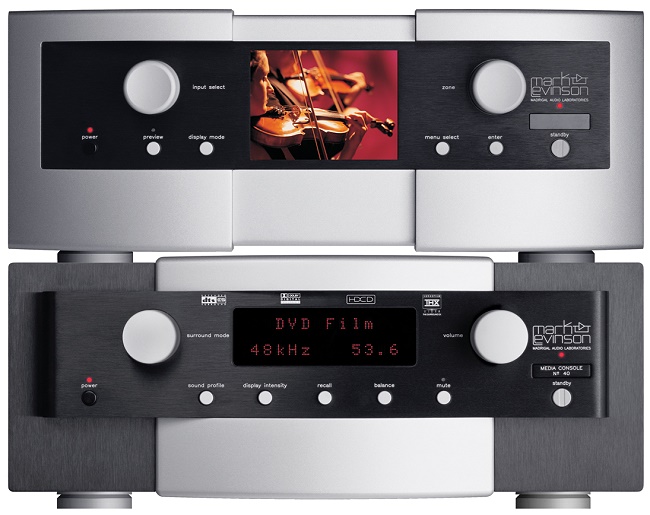Introduction
Mark Levinson (ML) is a company known for their rich tradition of making
two-channel audio components. Some of their products have been reviewed by Secrets,
and all of them were received with enthusiasm.
Their entry into the
multi-channel arena is certainly not surprising, but what is surprising was
the effort which went into the design of their first processor. This product
was not just a re-design of an existing component. While the technical prowess
of their design team was certainly leveraged and some existing technologies
were borrowed, this was a ground up design effort.
The press release for the No 40's announcement dates back to June, 2002 on the
ML website. In there it states that it took almost four years to complete
the design of this product which was the most ambitious and comprehensive
undertaking by the company.
A development cycle of this duration brings with
it some uncertainty about the competitiveness of the product at the time it
comes to market. This did not appear to be the case with the No 40. The
product to this day provides state of the art audio performance, and the user
interface is still better than anything else that I have ever seen.
The
upgradeable architecture means that any enhancements to the existing
specification or support for new technologies can be made when the need
arises. The addition of HDMI, an interface not in existence at the time of
development, lends credence to the value of this flexible design.
I was particularly interested in using the HDMI card with the new optical
playback devices that are now in the market. When the card became available, I
requested it for review along with the No 40 that I had already received.
The Design
In the PC world, one is accustomed to seeing a card-based architecture. As
new technologies develop or existing ones evolve, one can often buy a new
card or update firmware for existing hardware and keep pace with innovation.

The card cage architecture has been less
common in the A/V space. One big determining factor is cost as the economies
of scale of the PC industry do not apply here. There is also the added
complexity of both hardware and firmware design that comes with this
architecture. As a result, this architecture has only been embraced by a
small group of companies. For ML to have gone down this path for a product
which marks their entry into the surround sound processor market is
certainly a bold move, and it is one that they have pulled off successfully.
It is comforting to know that a product at this price point will be able to
support new technologies rather than becoming obsolete in short order.
The Mark Levinson No 40 consists of two
chassis: the Audio Processor and the Video Processor. The photo above shows
them one (Video) on top of the other (Audio), but you can arrange them
however you prefer.
A photo of the audio processor inside chassis
is shown below.

Many manufacturers go to great lengths to
isolate the audio and video circuitry in order to reduce interference between the two
sub-systems. ML has isolated the audio and analog video sections of the
processor by separating them into independent chassis, each with its own
power supply. The additional chassis and power supply certainly add to the
cost. The two processors are tethered by a custom cable over which they
communicate.
The video processor sports a color LCD. This
display can be used to navigate the menu system or monitor the standard
definition video being routed through the video processor. I found this
display particularly handy while watching multi-channel audio discs where I
was able to navigate the menus on the disc without having to power-on the
projector.
The decoding and processing horsepower needed for all the data crunching is
housed on the audio processor. Four Analog Devices SHARC DSP chips carry out
these tasks. The chips can perform high precision arithmetic in both fixed
point and floating point. The processing power exceeds the current
processing needs, and the extra power will surely be needed by a future
power-hungry application. This is another example of the forward thinking
design of the No 40.
Go to Part II.